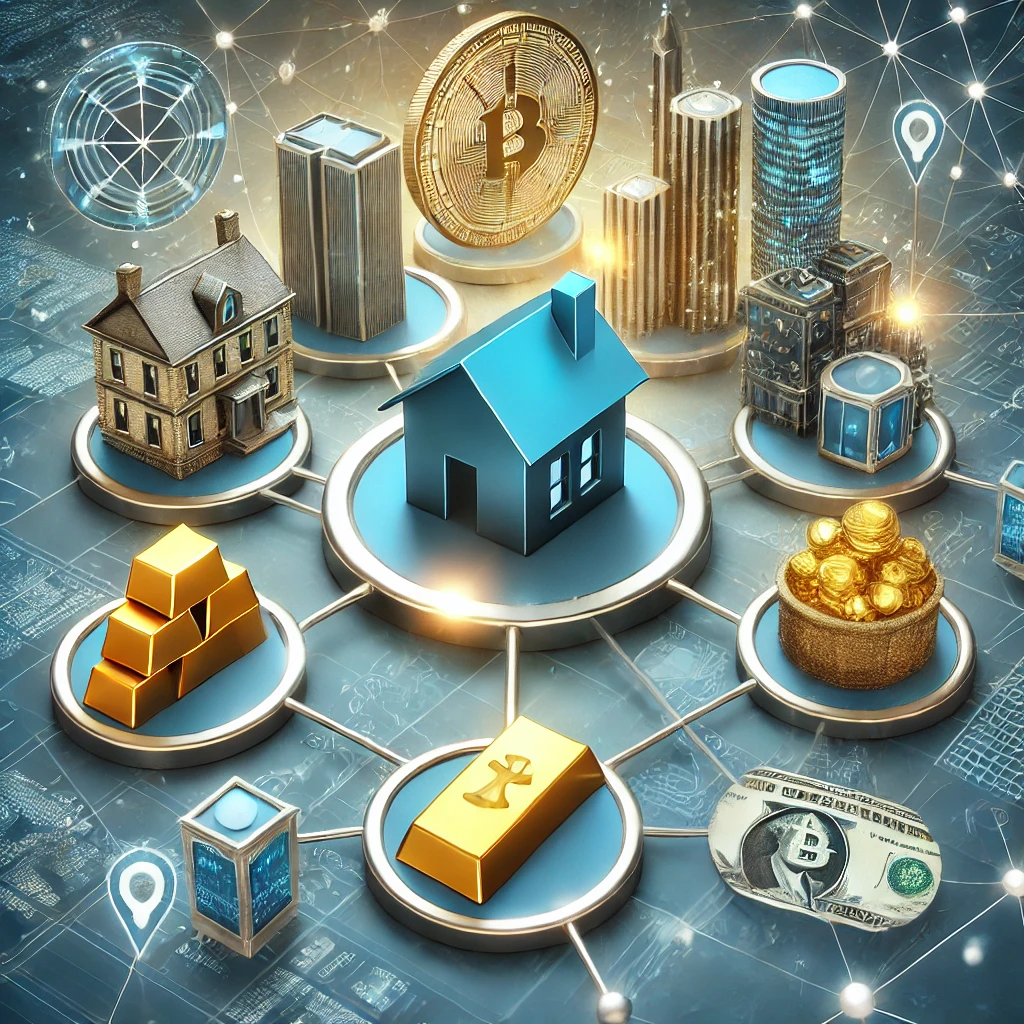In recent years, the blockchain space has seen an innovative trend gaining momentum: the tokenization of real-world assets (RWAs). This process involves creating digital representations of physical assets on a blockchain, enabling unprecedented levels of accessibility, liquidity, and security. The concept is transforming how we perceive ownership and value transfer, bringing traditional assets like real estate, commodities, and fine art into the digital age. In this blog, we’ll explore what RWA tokenization is, its benefits, challenges, and its potential to revolutionize various industries.
What is Real-World Asset Tokenization?
Real-world asset tokenization refers to the process of issuing a blockchain-based token that represents a real-world asset. This token acts as a digital proof of ownership and can be traded on various blockchain platforms. The asset being tokenized can range from tangible items like real estate, gold, and art to intangible assets like intellectual property and securities.
For instance, tokenizing a piece of real estate involves creating a digital token on a blockchain that represents ownership or a fraction of ownership in that property. This token can then be traded, sold, or used as collateral in decentralized finance (DeFi) applications.
Benefits of RWA Tokenization
1. Enhanced Liquidity: Traditional assets like real estate and fine art are known for their illiquidity. Tokenization allows these assets to be divided into smaller, tradable units, enabling easier buying and selling. This fractional ownership model increases market accessibility and liquidity.
2. Increased Accessibility: By tokenizing assets, investors from all over the world can access investment opportunities that were previously out of reach. This democratization of asset ownership opens up new avenues for investment and economic participation.
3. Transparency and Security: Blockchain technology ensures that all transactions and ownership records are immutable and transparent. This reduces the risk of fraud and enhances trust among participants.
4. Reduced Transaction Costs: Traditional asset transactions often involve intermediaries, which add to the costs. Blockchain technology enables peer-to-peer transactions, reducing the need for intermediaries and lowering transaction costs.
5. Efficient Management: Smart contracts automate various aspects of asset management, from rental income distribution to compliance with regulatory requirements. This automation streamlines processes and reduces administrative burdens.
Challenges of RWA Tokenization
1. Regulatory Hurdles: Navigating the complex regulatory landscape is one of the biggest challenges in RWA tokenization. Different jurisdictions have varying regulations regarding securities, property rights, and digital assets. Ensuring compliance with these regulations is crucial to the success of tokenization projects.
2. Technological Barriers: While blockchain technology has advanced significantly, there are still technical challenges to be addressed. Issues like scalability, interoperability, and security vulnerabilities need to be resolved to ensure the smooth functioning of tokenized assets.
3. Valuation and Price Discovery: Determining the value of tokenized assets can be challenging, especially for unique or non-standard assets like art and collectibles. Establishing a reliable mechanism for price discovery is essential for maintaining market confidence.
4. Investor Education: As with any emerging technology, there is a learning curve. Educating potential investors about the benefits and risks of tokenized assets is important for widespread adoption.
Industries Being Transformed by RWA Tokenization
1. Real Estate: The real estate industry stands to benefit immensely from tokenization. By breaking down high-value properties into smaller tokens, more investors can participate in the market. Additionally, tokenized real estate can be easily traded, increasing market liquidity.
2. Commodities: Precious metals like gold and silver have traditionally been difficult to trade due to their physical nature. Tokenization allows these commodities to be represented digitally, facilitating easier trading and ownership transfer. For example, projects like Paxos have created stablecoins backed by gold, providing a digital alternative to traditional gold ownership.
3. Art and Collectibles: The art market has always been exclusive and illiquid. Tokenizing art pieces enables fractional ownership, allowing more people to invest in high-value artworks. Platforms like Maecenas and Masterworks are pioneering the tokenization of art, democratizing access to this valuable market.
4. Finance: Tokenization is also making waves in the financial sector. Securities tokenization allows for the digital representation of stocks, bonds, and other financial instruments. This enhances liquidity, reduces settlement times, and provides greater access to global investors.
5. Intellectual Property: Intellectual property (IP) rights can be tokenized, providing a new way to monetize and trade IP assets. This opens up new revenue streams for creators and inventors while ensuring transparent and secure ownership records.
Real-world asset tokenization is poised to revolutionize the way we think about ownership, investment, and value transfer. By leveraging blockchain technology, tokenization brings enhanced liquidity, transparency, and accessibility to traditional assets. While there are challenges to overcome, the potential benefits make RWA tokenization an exciting frontier in the blockchain space.
As the technology matures and regulatory frameworks evolve, we can expect to see more innovative applications and widespread adoption of tokenized assets. For investors, entrepreneurs, and innovators, now is the time to explore the possibilities of real-world asset tokenization and be part of this transformative journey.

